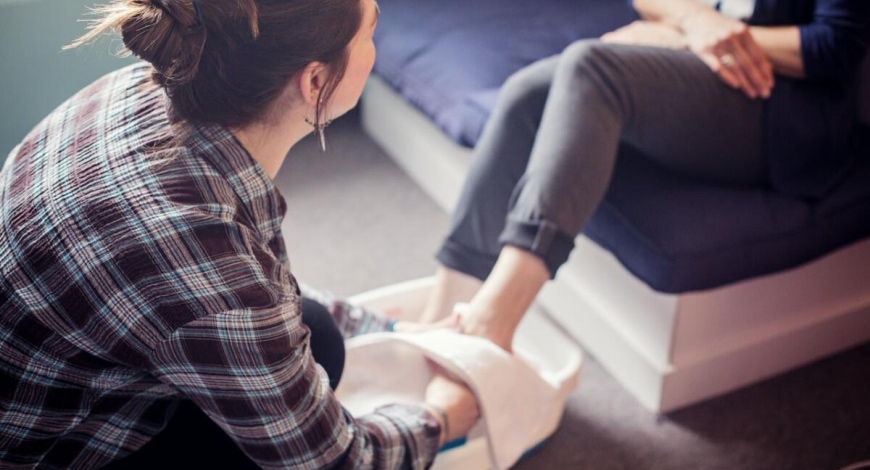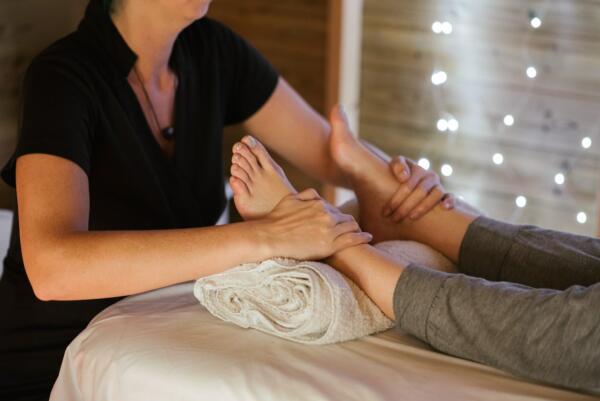Senior Foot Care; The Low Down on the Lowest Down

A pedicure is not just a treat, it’s vital for your senior’s overall health. This is something I learned through a conversation with Paula B., a longtime hospice nurse, and who more recently has made it her mission to help seniors with foot care. Paula was kind enough to share some fascinating information on these all too often ignored body parts.
Most of us pay no attention to these extreme extremities unless we’re in pain. However, love them or hate them, our feet can be a window to our overall health. Conversely, they can cause serious concerns if we take them for granted just because they are, well, feet.
Although discolored feet can indicate circulation problems, significant edema or swelling, can indicate a cardiac, kidney or vein issue. If you note unusual swelling, contact a medical provider. If this is not an immediate concern, regular foot care is essential.
According to PA (Pennsylvania) Foot and Ankle, this should involve:
- Soften toenails by soaking them in warm water for 10 minutes, dry thoroughly.
- With a nail clipper, cut straight across the top of the toenail.
- Use small cuts straight across the toenail to avoid splintering.
- Do not round the toenails at the corner – this reduces your chance of developing an ingrown toenail
- With an emery board or nail file, gently file the edges of the cut toenail to remove sharp edges.
The foot soak is important, as our nails thicken as we age, typically due to reduced circulation and cell accumulation. This means that clipping the nail can be challenging. While large sized clippers are easier to use, you can simply keep the nails filed down with the emery board.
Paula provided additional tips, such as:
- The application of Vicks vapor-rub can help to soften toenails before clipping; application can also soften heels to prevent open cracks.
- No one should ever use random power tools or anything you found in grandpa’s shed to care for our feet, even if it appears “spa-like”.
- No time for a full treatment? A warm water soak with Epsom salts can soften and clean the skin. Be sure to rinse thoroughly.
- The application of lotion can occur, but only after the feet have been properly cleaned and dried to avoid lotion accumulation.

The application of Vicks vapor-rub can help to soften toenails before clipping.
While completing the pedicure process, be sure to look for blisters or sores that may have developed (including between the toes). Elderly individuals may have difficulty reaching down to change their socks, much less clean their feet thoroughly. This means that sweat, bacteria and dirt could be trapped against damaged skin, sometimes for days at a time. This can easily lead to infection, and from there it is a small leap for that infection to spread to other toes, or even get into the blood.
This risk is higher for individuals who have diabetes; the related lower extremity neuropathy can cause lack of sensation. In turn, they may not be able to feel if there is a sore spot or other damage that could result in infection. If you’re not comfortable assisting an individual with diabetes in their foot care, contact a nurse or podiatrist to do the job. And perhaps look for special shoes and lotions for people with diabetes to help prevent the development of sores.
In short, tending to your senior’s feet doesn’t just give you quality time together, but it could help identify potential health concerns and avoid infection. So, remove the socks and treat some feet!
Non-diabetic nail care is one of many services provided by the staff of Unity’s Care Companions program. Visit https://unityhospice.org/care-companions/ or call Unity at 800-990-9249 to learn more about our program.
This blog post was shared by Dana B., a Unity Hospice volunteer.
If you found this information helpful, please share it with your network and community.






